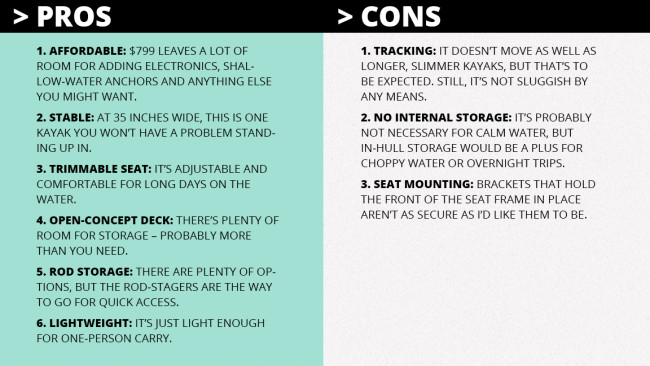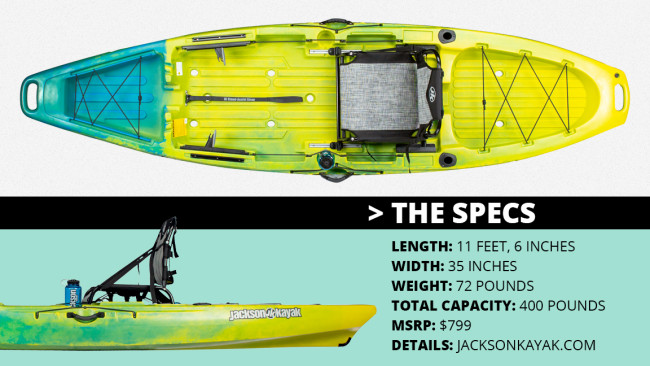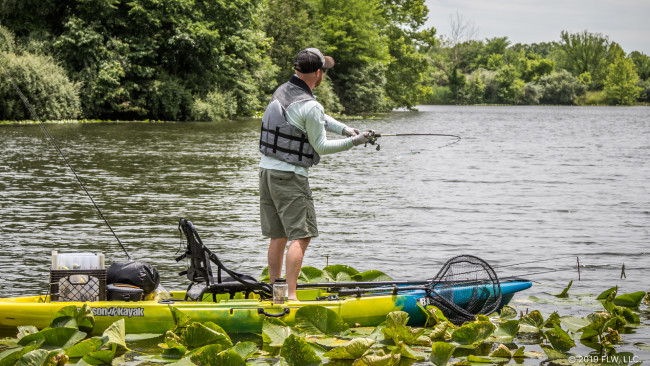Review: Jackson Kayak Bite
This kayak blends quality and affordability in a whole new way
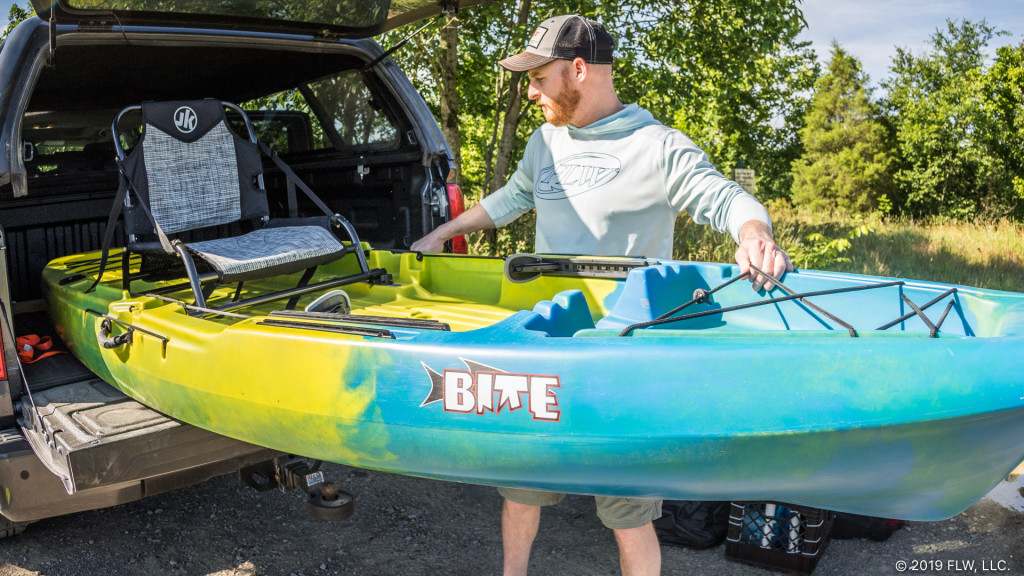
In the burgeoning fishing kayak market, there’s still a pretty large gap, on the whole, between entry-level boats (think $500 or less) and the top end of the market. It’s hard to find a really good kayak that blends quality, stability and affordability for anything less than $1,000.
At least that’s what I thought before I tried out the Jackson Kayak Bite.
I took Jackson Kayak’s new “price-point” fishing kayak out for a day on the water on a trio of small lakes in western Kentucky. Here’s what I found.
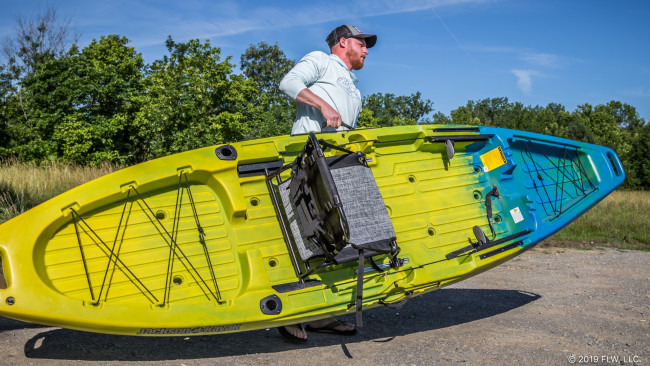
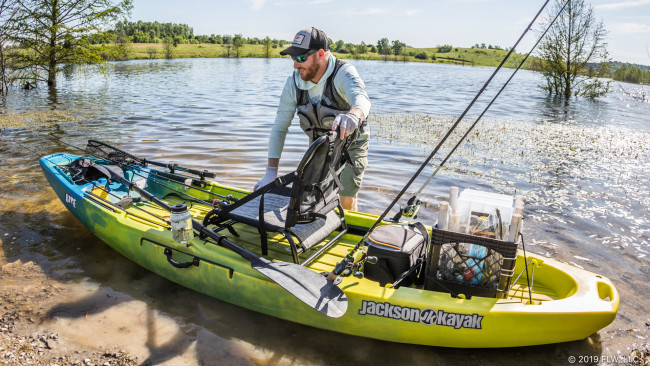
First impressions
Before even dropping the Bite in the water, I was really impressed with how easy it was for me to lift and maneuver it around. I’m not a big guy (5 feet, 8 inches and 160 pounds soaking wet), but I didn’t have any issues lifting it out of the truck bed and walking it down to the water. I’d imagine a cart would come in handy for walking the 72-pound kayak longer distances, but it’s definitely manageable if you’re loading and unloading it yourself.
At $799 (MSRP), you’re unlikely to find another kayak this size that feels as solid and as well-made as the Bite. The heavy-duty handles are a must for one-person carry, and the removable, trimmable seat is a big bonus for a price-point kayak.
The open-concept deck immediately stood out to me as a somewhat unique but absolutely novel design feature. In-hull storage is convenient for a lot of reasons, but I found the Bite’s flat, open deck to be optimal for storing a lot of gear that’s easy to get to. The storage well in the stern is huge, and a Jackson Kayak JKrate might be the play if you need a rod and tackle storage system to fill it up.
It often takes me more than 30 minutes to rig up my personal fishing kayak – and to be fair, I didn’t bring all my usual gadgets to review the Bite – but it took me less than 10 minutes to get rigged up and ready to hit the water once I got to each lake.
Stability
The first thing I test on any kayak is its stability, and I was thoroughly impressed with the Bite in that department. It’s 35 inches wide, which is more than enough to allow the average kayak angler to stand up without too much trouble. If I can stand up and make some casts without stability issues, it’s a good bet I’m not going to swamp the boat sitting down.
After a full day on the water, my opinion of the Bite’s stability didn’t change. At the first lake, I navigated standing timber and laydowns (unsuccessfully in some cases) in winds gusting upward of 15 mph. Without a pedal drive, I regularly found myself drifting into overhanging branches while my hands were occupied with a rod, and, on more than one occasion, I was forced to remove lures on my other rods from tangles of branches.
That can be a recipe for disaster in less stable kayaks – especially in windy conditions – but I never had a single issue in the Bite. If you’re looking for an affordable fishing kayak that feels as stable as it looks, this is it.
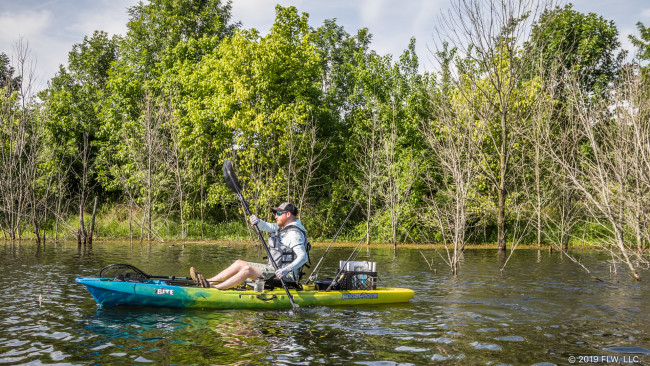
Maneuverability
The Bite isn’t a kayak you’d plan on taking out in ripping river current, so I wasn’t all that concerned with its relatively modest maneuverability. At 11 feet, 6 inches and 72 pounds, I just expected the Bite to track a little better than it did, though it isn’t sluggish by any means. I also wasn’t able to test it in calm conditions, and I have a feeling I would have been more impressed with its tracking if I wasn’t fighting a stiff wind most of the day.
On the other hand, the Bite feels incredibly easy to paddle, due in large part to the raised seat. I didn’t find myself getting fatigued, even when paddling several hundred yards at a time.
I did find myself wanting a shallow-water anchor system while fishing in the wind. Luckily, there are good options for that (like the Power-Pole Micro), but without one, I found myself ducking into creeks and cuts a little more often than I would have liked just to get out of the wind.
Bottom line: There are more maneuverable fishing kayaks out there, but the Bite’s stability and 35-inch beam more than make up for it. I’ll take stability over top-end tracking any day.
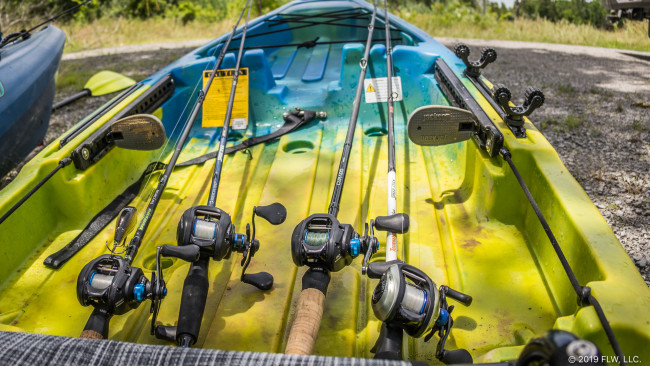
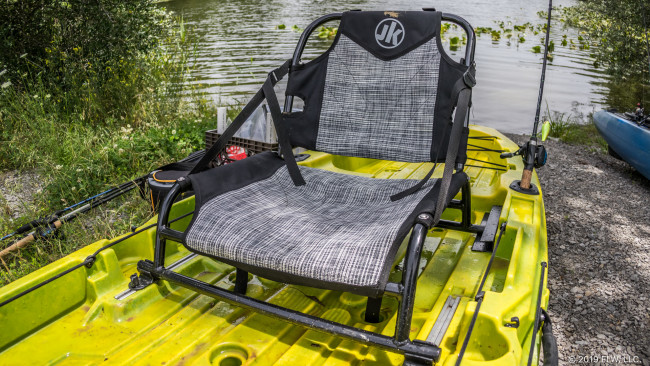
Putting it to the test
I rigged up the Bite with minimal gear: a homemade milk crate organizer with some rod holders and a pair of Plano 3700-size deep StowAways, five casting rods, a net, a cooler and some dry bags with extra gear. I also used scupper plugs at the first lake, though I left them in the truck at the final two lakes.
With flat storage wells at both the bow and stern, as well as tackle storage around and under the removable seat, I was almost disappointed in myself for not bringing a lot more gear. Given the stability of the Bite – and therefore little need for dry in-hull storage – there’s probably more storage room on the deck than you’ll even need.
One of my favorite features on this kayak was the inclusion of molded rod-stagers near the bow, which allowed me to have a rod in my hand and four more lying horizontally along the deck. Jackson put some serious thought into this design, and the rod-stagers (though simple) are a good example of that. My rods nested comfortably along the middle part of the hull and out of the way of my legs. In most cases, with the exception of oversized rod butts, users should be able to tuck rod butts under the seat frame for a little extra security. Despite bringing a milk crate with rod tubes, I only used the molded rod-stagers and pair of recessed vertical rod holders (behind the seat) for rod storage.
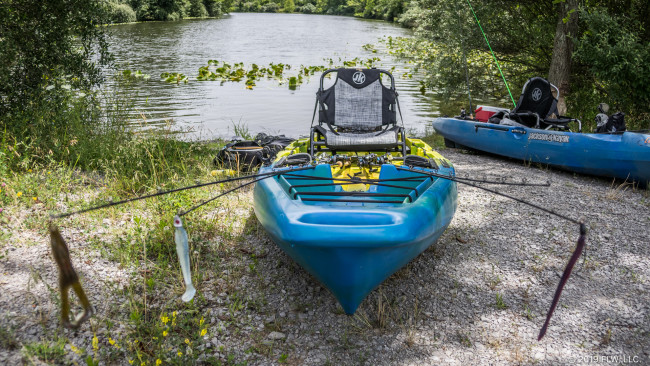
Marketed by Jackson as a “price-point” kayak, I was both surprised and impressed to see a pair of track mounts included on the Bite. I only used them for a pair of YakAttack paddle holders (which I used to secure my landing net), but I’d definitely put them to use for electronics if this were my everyday fishing kayak.
The trimmable seat is another nice feature in an $800 kayak, and I found it to be extremely comfortable, even after spending every bit of seven hours sitting in it. It’s adjustable to a number of positions, so even the shortest and tallest anglers can find a comfortable position. My only concern with the seat is its tendency, when I leaned back, to pop out of the plastic brackets that secure the front portion of the seat frame. That happened to me a couple times while moving around in the seat, and I think I’d probably want to do a little tinkering to make those brackets more secure if I owned this kayak.
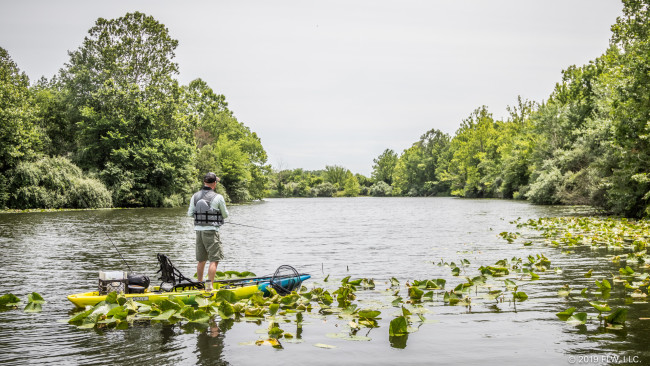
Fishability
The Bite is stable and versatile enough to serve as more than just a fishing kayak, but fishing is ultimately what it was designed for, and fishing is what I used it for.
My personal fishing kayak (10 feet, 6 inches and 57 pounds; 32 inches wide) is the primary basis for my comparison in this review, and with a price that came in just a couple hundred dollars cheaper than the Bite, I think it’s a pretty fair boat to compare next to Jackson’s budget-friendly model.
To put it simply: There probably isn’t another price-point kayak on the market that comes close to the value the Bite offers. The trimmable seat alone is a feature you’re not likely to find in many fishing kayaks under $1,000. That all amounts to a fishing kayak that does exactly what it’s supposed to do – and a little more.
When it comes to fishing from a kayak, most people are looking for five things: stability, maneuverability, storage, comfort and affordability. With the exception of high-end maneuverability, the Bite has each in spades. And that makes fishing from it an absolute pleasure.
With several different rods lying along the deck, I did a lot of switching between a crankbait, a finesse worm, a swimbait and a frog (along with a couple other baits). The Bite’s rod-stagers made swapping out rods easy and convenient, which isn’t usually the case in kayaks with rod storage behind the seat.
I was able to stand up and make long casts and hooksets, and moving to the front of the boat to retrieve items from the bow storage well was a piece of cake – two things I rarely do in my personal kayak. Jackson got it right with the 35-inch-wide hull.
The verdict
You might find kayaks on the market that are more stable or offer more storage or more bells and whistles, but you probably won’t find them all in one package that retails for under $800. The Jackson Bite fills the void between entry-level fishing kayaks and top-of-the-line multi-thousand-dollar models, and it fills that void well.
